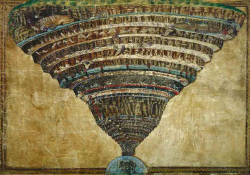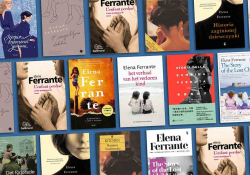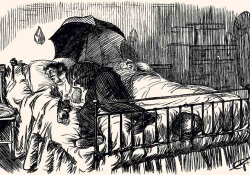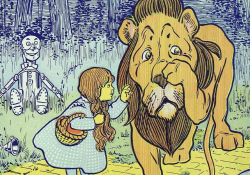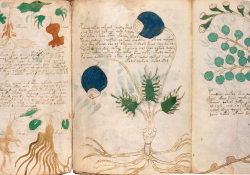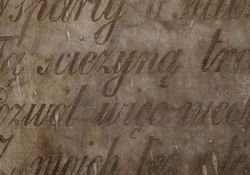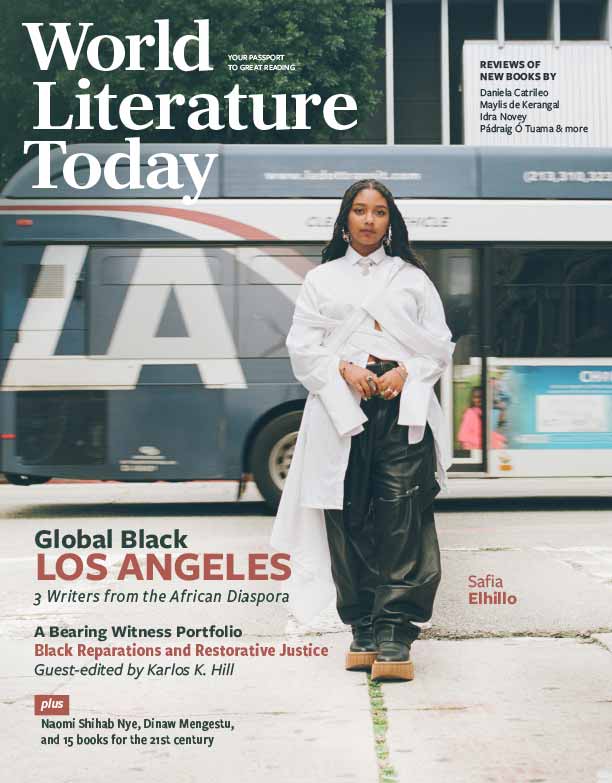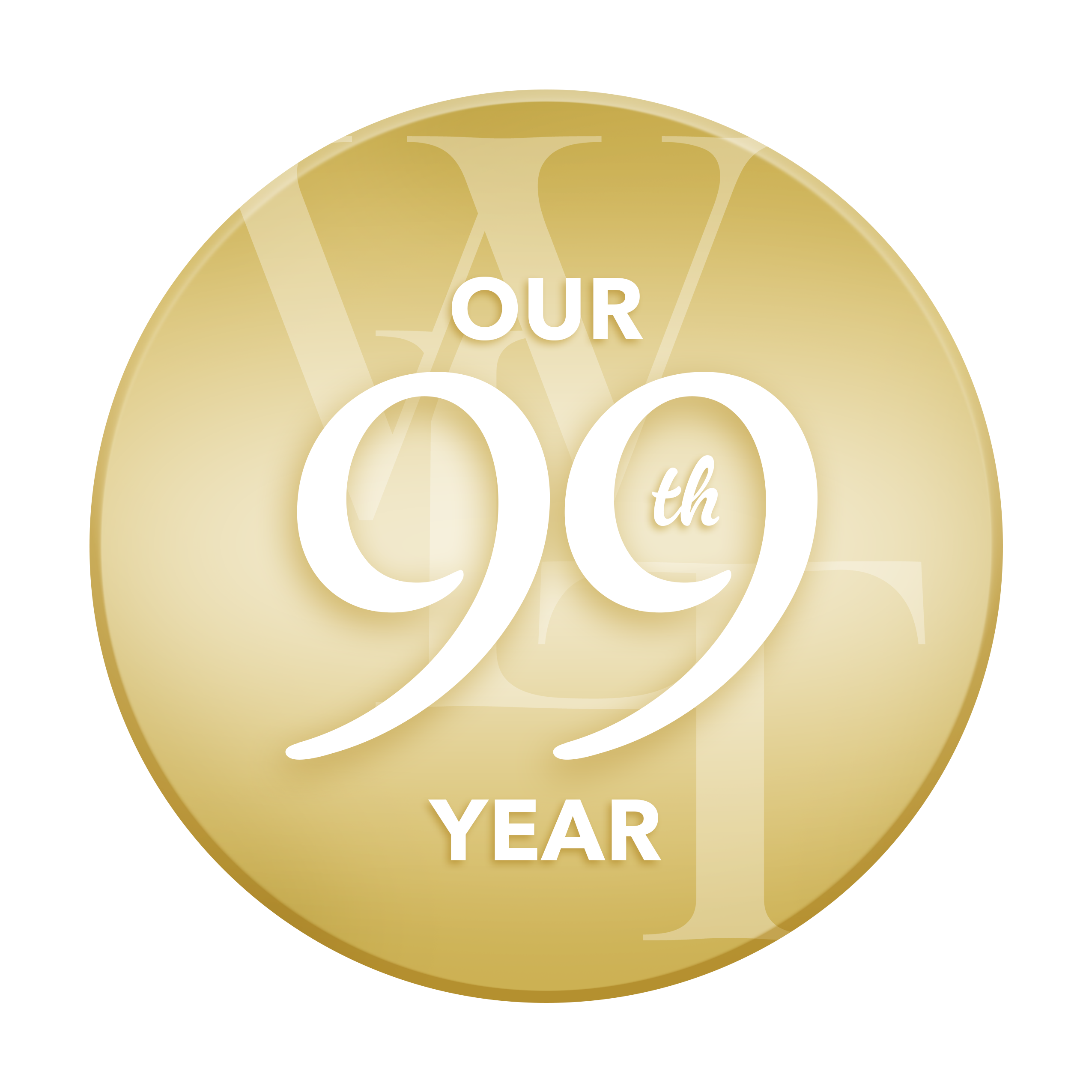Language as Refuge

What is lost when a language dies? Our columnist considers the loss of languages across time and wonders what it would look like to re-Babel the world.
How many languages have ever existed? It’s the kind of question that smacks of Borges’s unforgettable short story “The Library of Babel,” which imagines a library so vast in its exhaustion of language, form, content, and cognition as to be a universe in itself. The mind reels, trying to conceive of the multitudinous forms of human communication stretching back the 350,000 years that Homo sapiens have walked the earth.
There are attempts to at least put a numerical answer to this question. According to a presentation given by linguist Stacie Boswell, there may have been as many as sixty thousand languages spoken during the era 40,000 bce to 10,000 bce, with some forty thousand more spoken since the dawn of agriculture around 10,000 bce. That would make a total of perhaps around one hundred thousand. Other estimates for this time range fluctuate from as few as thirty thousand to as many as five hundred thousand. Stretching back to 350,000 years ago, who can even say?
We will probably never know just how many languages the human species has ever spoken, but it is widely believed that around the time Columbus set sail, those numbers had dwindled to about seven thousand spoken languages. In a paper published at the turn of the last century, anthropologist H. Russell Bernard reported that, in spite of the horrors of colonialism, that number had only dropped to about six thousand by the year 2000. Unfortunately, Bernard reported the prediction that by the year 2100 that number would fall to three thousand—the forces of globalization would be much, much worse for linguistic diversity than those of the colonial era. Some researchers believe that as many as 90 percent of all extant languages could be endangered by 2100.
Languages tend to die out due to the forces of assimilation.
Languages tend to die out due to the forces of assimilation. This can be quite purposeful—for instance, Bernard notes in his paper that in Tanzania, Swahili was promoted by government agents as a way of building the nation, with the approval of at least some of those whose languages were relegated in the process. (Bernard also shares that this holds true for many speakers of endangered languages in North America.)
As Ross Perlin explains in his fascinating recent book Language City (2024), languages also tend to die out when their speakers immigrate to metropolises; Perlin aptly builds his book around the fact that New York City is the most linguistically diverse place in the world, offering the potential of both language preservation and extinction. Perlin further explains that, as with New York, many world cities have become modern-day Babels due to the enormous influxes of immigration sweeping into these locations since the start of the twentieth century, which continue to be quite strong to this day. Many in these cities struggle to preserve their mother tongues, while others are content to speak the dominant languages.
What is lost when a language dies? For his own part, in his paper Bernard offers plenty of arguments for why language extinction is a bad thing—he compares loss of linguistic diversity to loss of biodiversity, argues that losing languages is equivalent to losing ways of seeing the world, and declares that we cannot afford to wait and see what happens. To be honest, I find arguments like these speculative and uncompelling. While something in me feels innately that losing languages is a bad thing, it is a nebulous feeling that is certainly diaphanous compared to my sense of justice around other social causes.
Language City is nothing if not a vivid demonstration of what is lost as linguistic diversity shrivels.
Possibly the greatest strength of Language City is that is makes these feelings anything but diaphanous; the book is nothing if not a vivid demonstration of what is lost as linguistic diversity shrivels. For instance, Perlin profiles a “vertical village” of Nepalese living in a high-rise apartment building in Brooklyn, chronicling the web of interrelationships and cultural practices that are dependent on those in this community speaking the languages they immigrated with. Such vertical villages are not hard to find throughout the five boroughs—small reserves of linguistic diversity where immigrants have built out a place for themselves in the heart of the American system.
Part of Perlin’s purpose in venturing out to these vertical villages is to teach to others the tools of documenting dying languages, and to empower them to go out and do so before it is too late. Perlin is a codirector of Manhattan’s Endangered Language Alliance, which to date has created some level of documentation of over one hundred languages spoken around the world, and he hopes the alliance will serve as a serious counterweight against the forces that are extinguishing languages.
In Language City, he describes a class he led at Columbia University in which he taught students the basics of documenting an endangered language. One of the starting points is to create something called a Swadesh list, a 207-item inventory that documents the basic shapes (e.g., a star) and concepts that all languages are thought to hold in common. Perlin describes the Swadesh list as a mainstay of linguistics that is used to elicit “the core vocabulary considered . . . least likely to change . . . and thus particularly useful for making comparisons with related languages.” Interestingly, he notes that the Swadesh list does not contain the concepts art, love, and god, all of which are thought to be “culture-specific concepts” that would not necessarily exist across a broad range of languages. It is perhaps the most compelling argument I can imagine for language-preservation to try and imagine a world in which those three concepts are lost from the universe.
Beyond what Perlin has to say about the cultures of New York City, there is an argument for linguistic diversity based on believing that pluralism in and of itself is valuable. I think back to my March 2024 column on Boontling, a sublanguage that flourished in Northern California in the early twentieth century, and which became popular precisely because it gave shape to its speakers’ needs to creatively participate in the formation of a protected in-group. Language can be a form of safety and familiarity in unknown and potentially frightening environments. Language City makes most palpable the ties of community that emerge when individuals have a form of communication that feels like a common point of refuge.
Researchers Suzanne Romaine and Daniel Nettle strike a similar note in their book Vanishing Voices (2000) when they observe that the establishment of a single world language would not be so much an instrument of world peace as global totalitarianism. They note the countless civil wars and other forms of barbarity that have occurred in spite of a shared language, and indicate that the cause of peace is almost certainly better furnished by multiple languages. Perlin says as much when he observes that New York City “can be a home for so many groups in part because it’s a homeland for none of them, no one’s turf.”
Perlin also demonstrates that linguistic diversity is a form of resilience, as these groups are able to thrive in New York in no small part because they have their own language. In his book Language Death (2000), author David Crystal makes the same case, demonstrating that our adaptability to virtually every ecological niche on the face of the globe rests precisely on our ability to develop languages suited to the tasks of living in these environments. This adaptability has been the basis of ecological arguments for preserving languages—essentially, these languages contain practices that allow humans to exist in inhospitable environments and are thus key parts of the climate solution.
I would like to conclude by asking, What might it look like to reverse the loss of linguistic diversity—that is, to purposely re-Babel the world? It is a question I cannot recall having seen anywhere in the literature around linguistic diversity, which I suppose makes me feel curious: for if you accept the premise that it is better to have more languages, then it’s just a small leap to move from language preservation to language production. What would it look like to move back to the language diversity of Neolithic times? If that era’s population of under ten million people could support ten thousand languages, then one imagines it would be utterly within reach for a global population of some seven billion to do the same.
If only as a thought experiment, I do wonder what the world would look like if we actively strove to support more languages. Thinking back to my recent column on Toki Pona, I am reminded of the joy, intellectual stimulation, and feelings of community that speakers of that language experienced as they delved into its intricacies. These to me seem the most human and palpable reasons for supporting linguistic diversity, and I am grateful to books like Language City for offering a precious glimpse into what kind of a world that would be.
Oakland, California

